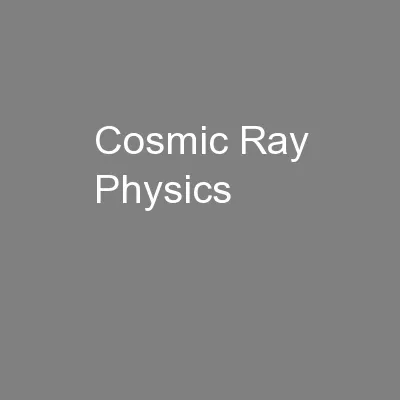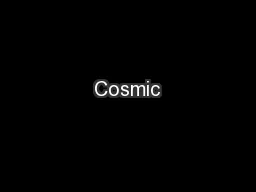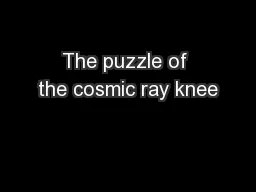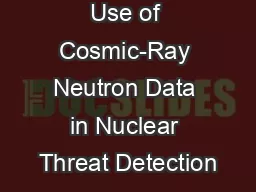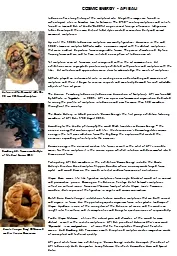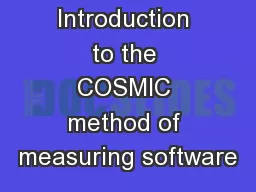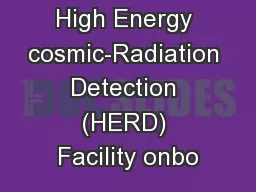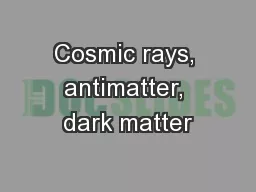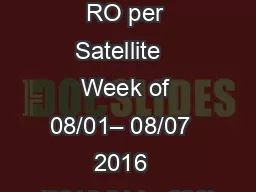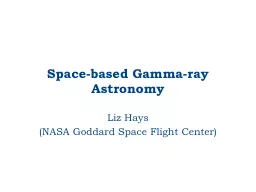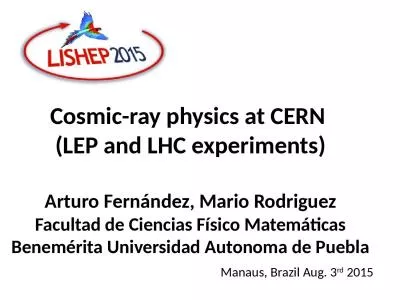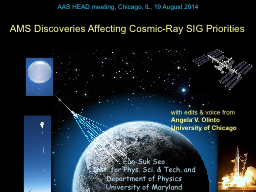PPT-Cosmic Ray Physics
Author : trish-goza | Published Date : 2016-07-04
at Hartnell College A Case Study in Successful Undergraduate Research at a TwoYear College Leo Osornio Hartnell College Presented at the 2012 AAPT Summer Meeting
Presentation Embed Code
Download Presentation
Download Presentation The PPT/PDF document "Cosmic Ray Physics" is the property of its rightful owner. Permission is granted to download and print the materials on this website for personal, non-commercial use only, and to display it on your personal computer provided you do not modify the materials and that you retain all copyright notices contained in the materials. By downloading content from our website, you accept the terms of this agreement.
Cosmic Ray Physics: Transcript
Download Rules Of Document
"Cosmic Ray Physics"The content belongs to its owner. You may download and print it for personal use, without modification, and keep all copyright notices. By downloading, you agree to these terms.
Related Documents

